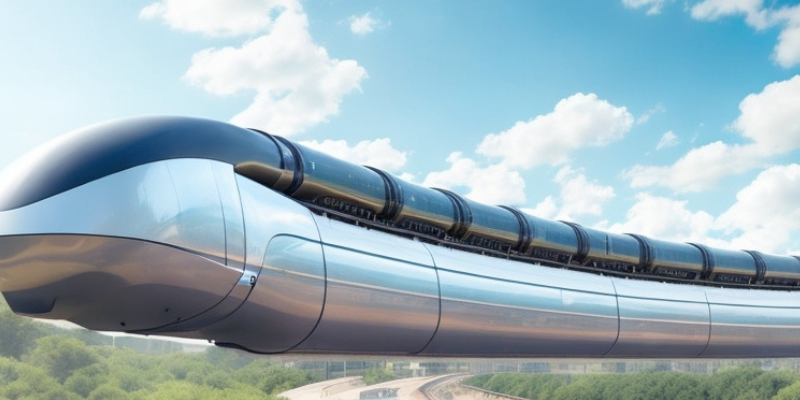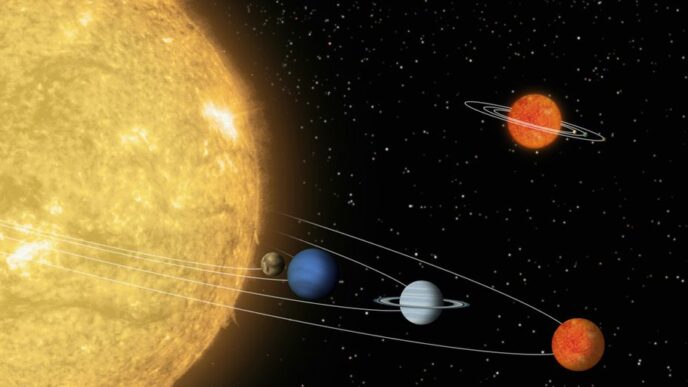Imagine being able to travel from New York to Los Angeles in just a few hours, or crossing the English Channel as easily as driving down the highway. The future of high speed transportation is rapidly approaching and it promises to revolutionize the way we move around our cities and countries. From hyperloops that can reach speeds of up to 700 miles per hour, to hovercrafts that whisk passengers across water at breakneck speeds, this technology is set to change everything we know about commuting and traveling. In this blog post, we’ll delve into the exciting developments in high speed transportation and explore what lies ahead for this exciting field.
Introduction to High Speed Transportation
High Speed Transportation (HST) is a rapidly growing field of study and research. HST technologies have the potential to revolutionize the way we travel, both domestically and internationally. The term “high speed transportation” generally refers to any mode of transportation that can move people or goods at speeds greater than what is possible using conventional technologies.
There are many different HST technologies being developed around the world, ranging from Hyperloop systems to supersonic aircraft. While some of these technologies are still in the early stages of development, others are already being implemented on a commercial scale.
The biggest challenge facing HST developers is finding ways to overcome the significant barriers to entry, such as high costs and regulatory hurdles. However, as HST technologies continue to mature, it is likely that we will see more and more of them enter into mainstream use.
Hyperloop: What is it and How Does It Work?
Hyperloop is a high speed transportation system that uses a sealed tube to move passengers or freight at speeds of up to 700 mph. The system was first proposed by Elon Musk, the founder of Tesla and SpaceX, in 2013.
The Hyperloop system consists of a sealed tube through which a pod can travel free of air resistance or friction. The tube is supported on columns or pylons and can be elevated above ground level to avoid obstacles. The pod is propelled through the tube by a linear induction motor and levitates above the track using magnets.
Musk has estimated that a Hyperloop system could transport passengers between Los Angeles and San Francisco in just 35 minutes, which is significantly faster than current train or plane travel times. He also believes that the system could be built for 10% of the cost of high-speed rail.
A number of companies are currently working on developing Hyperloop technology, including Virgin Hyperloop One, Hyperloop Transportation Technologies, and Elon Musk’s SpaceX. It is still unclear when or if the system will be put into operation, but it has the potential to revolutionize high-speed transportation.
Maglev Train: What is it and How Does It Work?
Maglev trains are a type of high-speed train that use magnets to levitate above the tracks and propel themselves forward. They can reach speeds of up to 600 kilometers per hour (370 miles per hour), making them the fastest trains in the world.
How do maglev trains work?
The key to maglev technology is electromagnetic suspension (EMS). EMS uses magnets to levitate the train off the tracks, eliminating friction and allowing it to reach very high speeds. The magnets also work to guide the train along the track, so it doesn’t need a separate guidance system.
While EMS systems have been around for decades, they were not previously powerful enough to lift a large train off the ground. However, recent advances in magnetic technology have made EMS systems much more powerful, making maglev trains a reality.
What are the benefits of maglev trains?
Maglev trains offer a number of advantages over traditional trains:
- They are much faster than traditional trains, making them ideal for long-distance travel.
- They are very smooth and quiet, making for a comfortable ride.
- They are environmentally friendly, as they emit no pollutants or greenhouse gases.
- They require less energy than traditional trains, making them more efficient.
In addition, maglev trains are much safer than traditional trains, as there is no risk of derailment. This makes them ideal for high-speed transportation in densely populated areas.
Overall, maglev trains offer an efficient and safe way to travel long distances at very high speeds.
Hovercrafts: What are they and How Do They Work?
A hovercraft is a vehicle that is supported by a cushion of air and can travel over land or water. The first hovercraft was invented in the early 1950s, and since then they have been used for a variety of purposes, including transportation, rescue missions, and military operations.
How do hovercrafts work? Hovercrafts use an engine to create a large volume of low-pressure air. This air is directed downwards through a skirt around the edge of the hovercraft, which acts as a seal against the ground or water surface. The pressure of the air under the craft creates lift, which allows the hovercraft to float on top of the surface.
The hovercraft’s engines also power propellers, which provide thrust to move the craft forwards or backwards. To steer a hovercraft, the engines are used to direct more air flow to one side or the other, causing the craft to turn in that direction.
What are some advantages of hovercrafts?
One advantage of hovercrafts is that they can travel over both land and water surfaces. This makes them versatile vehicles for transportation and rescue missions. Hovercrafts can also travel across rough terrain that would be difficult for other vehicles to navigate, such as marshes or swampy areas. Additionally, because they float on a cushion of air, they have very little friction against the surface, meaning they can reach high speeds relatively easily.
What are some disadvantages of hovercrafts?
One disadvantage of hovercrafts is that they are relatively noisy, which can be a problem for certain types of operations. Additionally, because they are supported by a cushion of air, they can be affected by strong winds, making them difficult to control. Finally, hovercrafts require a large amount of fuel to operate, so running costs can be high.
Autonomous Vehicles: How Could They Impact High Speed Transportation?
Once solely the stuff of science fiction, autonomous vehicles are quickly becoming a reality. Self-driving cars are already being tested on public roads, and it’s not hard to imagine a future in which autonomous vehicles are the norm.
So what does this mean for high speed transportation? For one thing, it could make long-distance travel much more convenient. Imagine being able to take a nap or catch up on work while your car drives you to your destination. Or, if you’re taking a cross-country trip, you could take turns driving and sleeping in shifts so that you can make better time.
Autonomous vehicles could also have a major impact on the way we build infrastructure for transportation. If we don’t need to build roads for human drivers, we could design them differently perhaps narrower and with fewer lane changes which would save space and money. We might also see a shift away from private ownership of vehicles, as self-driving cars could be summoned on demand like taxis or Uber rides.
Autonomous vehicles have the potential to transform the way we think about transportation and high speed transportation in particular. It’s an exciting time to be watching the development of this technology!
The Future of High Speed Transportation: Predictions for the Near Future
The future of high speed transportation is looking very exciting. We are on the cusp of some major breakthroughs that will revolutionize the way we travel. Here are some predictions for the near future:
Hyperloop technology will become a reality. This new form of transport, which uses vacuum sealed tubes to propel passengers at high speeds, has the potential to drastically reduce travel times.
Electric vehicles will continue to gain popularity, thanks to their environmental friendliness and reduced operating costs.
Self-driving cars will start to become more common, as autonomous technologies continue to develop. This could potentially make road travel much safer and more efficient.
Personal air vehicles, such as hovercrafts and drones, will start to become more viable options for short-distance travel.
Space tourism will become more accessible, as private companies continue to develop new rockets and spacecrafts.
These are just a few of the many exciting advancements that we can expect in the field of high speed transportation in the coming years. With any luck, these new technologies will help us move around our increasingly crowded world in a faster, cleaner and safer way .
Conclusion
The future of high speed transportation is filled with exciting possibilities. It’s expected that hyperloops and hovercrafts will be just the beginning, as new technologies continually emerge to push the boundaries of what’s possible. With improved infrastructure, more efficient energy sources, and better engineering solutions, our dreams for faster travel are becoming a reality.













